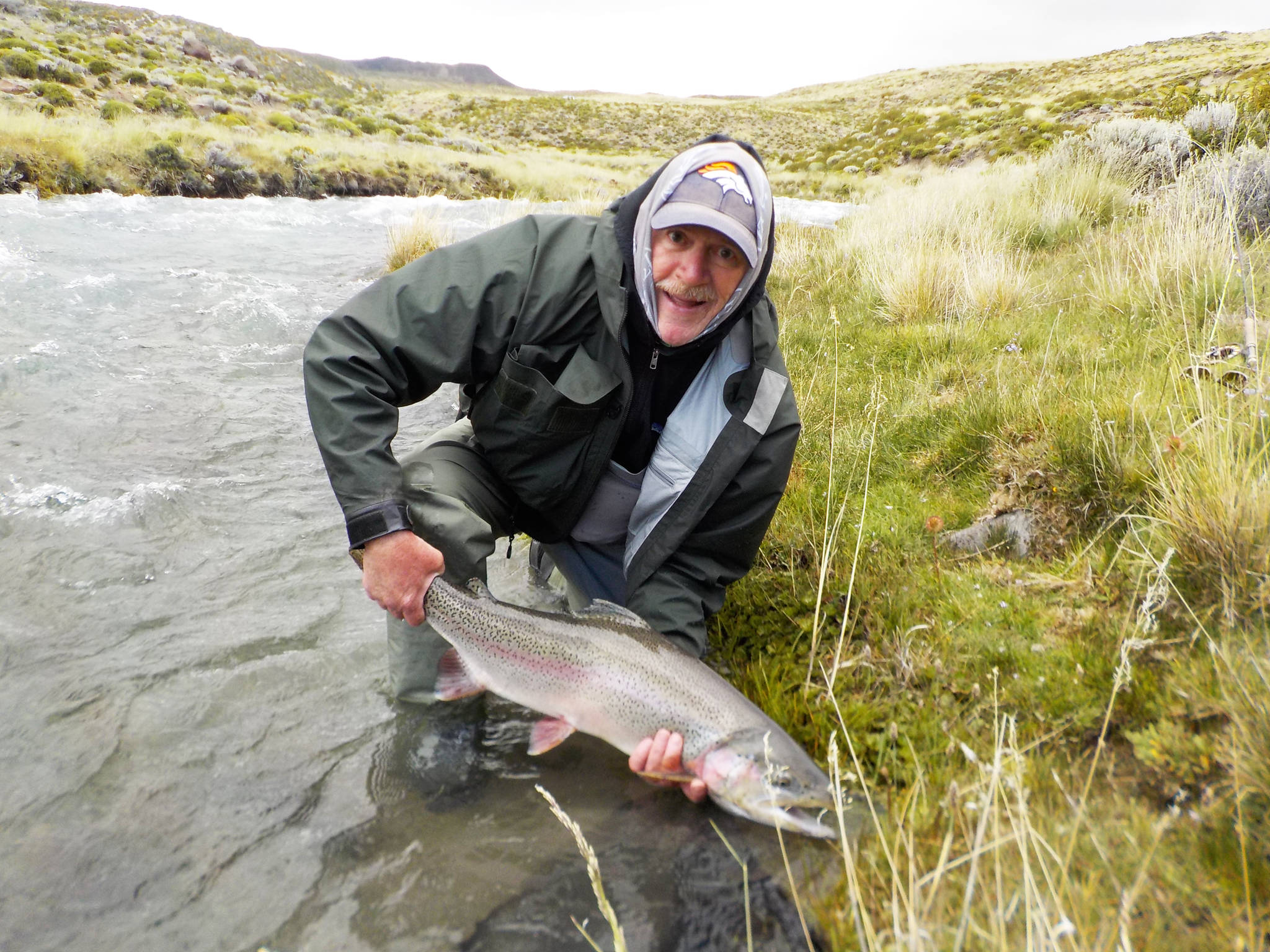For some avid anglers, even the prolific fishing opportunities in the Last Frontier are sometimes not enough. That was true for Soldotna resident Bruce King, who went from Alaska to Argentina last year in search of the ultimate rainbow trout.
He wasn’t disappointed.
King told tales of huge fish, hiking trips and good food in a presentation called “Patagonia: Land of meat, wine, chocolate and gigantic rainbow trout,” which he gave to the local chapter of Trout Unlimited on March 29.
King and his wife, Mary, traveled 8,300 miles from Anchorage to Buenos Aires in late December 2015, and then went on to several different cities on their monthlong trip, returning to Alaska in February 2016. King, a former fisheries biologist for the Alaska Department of Fish and Game, said it “begs the question for a lot of people: Why would someone who’s a rainbow trout fisherman go that far to catch rainbow trout?”
He and his wife tried to spend about a week in each place. King’s fishing portion of the trip took place during the offseason since their trip spanned January and February, he said.
King did a lot of his fishing on two lakes in Santa Cruz, Argentina — the Quiroga and the Jurassic. Avid fly fishermen can stay at the Estancia Capitan ranch, which King said was transformed into a fishing destination years ago when its owner realized that would be more productive than actual ranching there.
“Basically was grinning all the time because he made this decision to switch from chasing his 3,500 sheep around to handling a half a dozen anglers every day,” he said.
The trout were placed in Quiroga Lake about 10 years ago, and are only available for catch and release, King said. There were areas of both lakes that were very windy, which King said boded well for fishermen as the wind kicked up weed beds in the water and freed crustaceans, which the trout would then come closer to eat.
“So the hardest part was really … how do you cast a scud pattern in this kind of wind?” he said.
Much of King’s experience interested him from a biological perspective. King said the trout at Lake Quiroga can grow to 30 inches in about 10 to 12 years.
“There was some pretty normal … growth for the first couple of years, and then years three through five, just explosive growth, more than I’ve ever seen even on a coho salmon,” he said. “… And then in the last few years you see the growth rate taper off.”
This led King to wonder whether the fish grow so fast and then taper off because they’ve exhausted their food resources, or if the phenomenon is due to some other factor. He said relatively little is known about these trout populations.
“My big question when I look at these kinds of systems is, is this sustainable?” he said. “Because it’s an artificial system.”
The fact that only a handful of anglers are allowed to fish from the ranch each week does at least guarantee some chance for the trout, King said.
All told, the trip cost about $8,000, King said. While not everyone can make such a trek to a different country, King said it was worth it from an angler’s perspective.
“The 30-inch rainbow is the holy grail,” he said. “And there’s a lot of people that claim to have caught a 30-incher in Alaska, but very, very few exist.”
Reach Megan Pacer at megan.pacer@peninsulaclarion.com.

